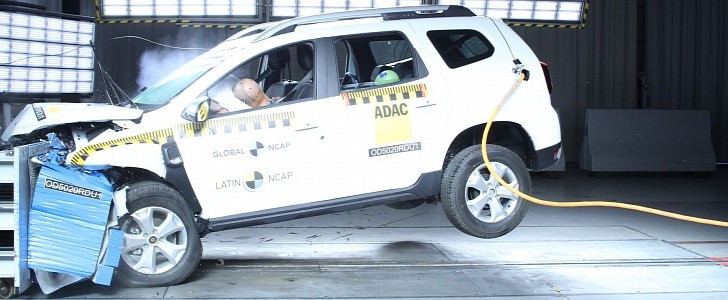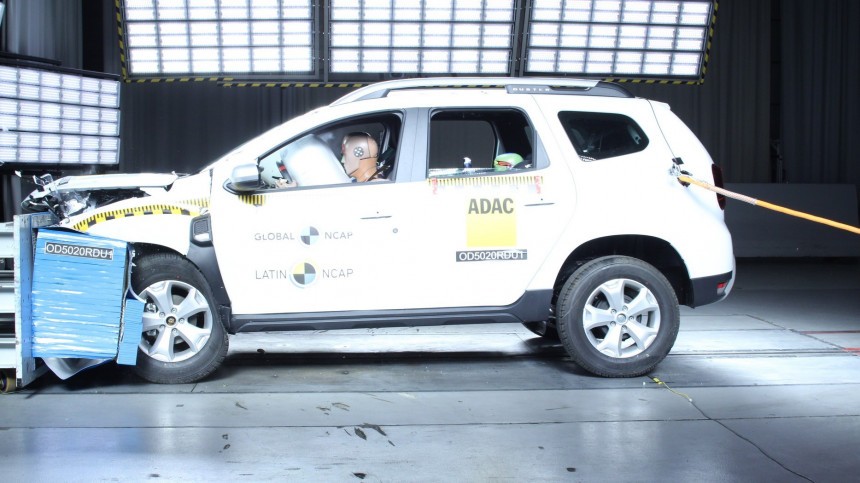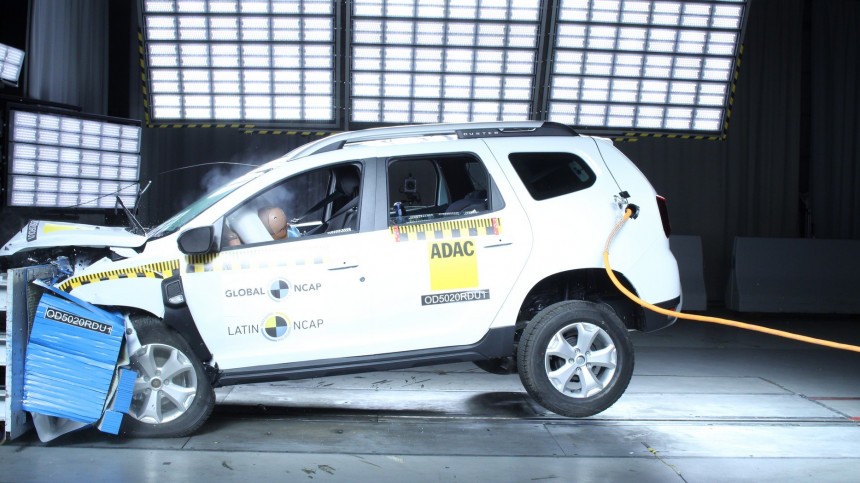When you buy a car, you trust it will be safe. When you drive, you trust people beside you will be careful. Traffic safety loses every time that trust is betrayed by reality. Apart from incompetent, inattentive, and reckless drivers, car defects are another danger. It is even worse when cars are just more risky depending on where you live.
Latin NCAP helped Latin Americans discover that many of the vehicles they drive are not as safe as those sold in Europe, Japan, or the U.S. The Renault Duster and Suzuki Swift are the latest examples of that.
Latin NCAP did not give a single star to any of these vehicles. While the Swift is only made in Japan and India, the Duster is produced in Brazil, hence the focus on this car for this article. If the Swift is a death trap in Latin America, that is up for the importer to solve the issue. The Duster is under direct responsibility from Renault. It gives the car the diamond badge because Dacia does not exist in Latin America.
The Duster made in Romania for the European market received three stars in its latest Euro NCAP test. The report informs that whiplash protection is marginal, but the vehicle structure is apparently stable. The Duster got only three stars because head protection for the driver was poor, meaning they could die in a full-width crash due to the deceleration.
If you think that could not be worse, just check the report for the Renault Duster produced by Latin NCAP. The bodyshell integrity was deemed unstable and “not capable of withstanding further loadings.” “Structural intrusion was unusually high” in the side impact test, and the front passenger door opened during the trial. Finally, there was a fuel leak after the front impact test.
Renault answered with the typical reply for these cases: we comply with all safety regulations and even exceed some of them. That speaks more about how little the region governments care about traffic safety than about the company’s concerns with it. According to the World Bank, road traffic kills about 130,000 people in the region.
Another argument Renault used was that Latin NCAP tested the same vehicle in 2019, and it scored four stars according to an older test protocol. That’s true, but there was no fuel leak, door opening, or “unusually high” structural intrusion with that vehicle. Taking these results into consideration, the Brazilian Duster is now worse than it used to be.
Latin NCAP already detected the unstable structure in that test, which gave Renault two years to fix that. The company lost that opportunity before facing a more strict protocol, which also happens to test whiplash protection. When this test was performed, Latin NCAP discovered that a Duster driver has poor neck protection. In other words, they could snap them in a rear impact.
Latin NCAP warns all car manufacturers about the change at least one year before it happens. Despite becoming increasingly more rigorous, the Latin NCAP test is still less strict than that of Euro NCAP. It would be fantastic if Latin NCAP repeated these tests with the exact requirements used in Europe. How would cars manufactured elsewhere fare? If automakers are complaining about the protocols adopted by Latin NCAP, we bet the results would be shocking.
Automakers rightfully say that they are under extreme pressure in Latin America. Many customers there think they are blood-sucking parasites willing to earn millions by charging them extremely high prices for their cars. However, convert these prices to stronger currencies, and you’ll realize Latin American vehicles are among the cheapest in the world. Making a profit in such conditions is incredibly hard. Ford recently gave up on that and decided to become a car importer in Brazil.
That all raises a moral question that is not easy to answer. Theoretically, carmakers should produce vehicles with the same specifications as those sold in developed countries, charging whatever that would cost from customers anywhere. But they would probably not have how to justify factories and structures in these countries for the lower sales volumes they would have. Should they adapt to the reality of each market and offer the best they can for an affordable price? The only certainty we have is that we would not like to be in automakers’ shoes deciding that.
Latin NCAP did not give a single star to any of these vehicles. While the Swift is only made in Japan and India, the Duster is produced in Brazil, hence the focus on this car for this article. If the Swift is a death trap in Latin America, that is up for the importer to solve the issue. The Duster is under direct responsibility from Renault. It gives the car the diamond badge because Dacia does not exist in Latin America.
The Duster made in Romania for the European market received three stars in its latest Euro NCAP test. The report informs that whiplash protection is marginal, but the vehicle structure is apparently stable. The Duster got only three stars because head protection for the driver was poor, meaning they could die in a full-width crash due to the deceleration.
If you think that could not be worse, just check the report for the Renault Duster produced by Latin NCAP. The bodyshell integrity was deemed unstable and “not capable of withstanding further loadings.” “Structural intrusion was unusually high” in the side impact test, and the front passenger door opened during the trial. Finally, there was a fuel leak after the front impact test.
Another argument Renault used was that Latin NCAP tested the same vehicle in 2019, and it scored four stars according to an older test protocol. That’s true, but there was no fuel leak, door opening, or “unusually high” structural intrusion with that vehicle. Taking these results into consideration, the Brazilian Duster is now worse than it used to be.
Latin NCAP already detected the unstable structure in that test, which gave Renault two years to fix that. The company lost that opportunity before facing a more strict protocol, which also happens to test whiplash protection. When this test was performed, Latin NCAP discovered that a Duster driver has poor neck protection. In other words, they could snap them in a rear impact.
Automakers rightfully say that they are under extreme pressure in Latin America. Many customers there think they are blood-sucking parasites willing to earn millions by charging them extremely high prices for their cars. However, convert these prices to stronger currencies, and you’ll realize Latin American vehicles are among the cheapest in the world. Making a profit in such conditions is incredibly hard. Ford recently gave up on that and decided to become a car importer in Brazil.
That all raises a moral question that is not easy to answer. Theoretically, carmakers should produce vehicles with the same specifications as those sold in developed countries, charging whatever that would cost from customers anywhere. But they would probably not have how to justify factories and structures in these countries for the lower sales volumes they would have. Should they adapt to the reality of each market and offer the best they can for an affordable price? The only certainty we have is that we would not like to be in automakers’ shoes deciding that.























